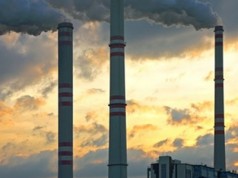
London/Nairobi – The targets and intended reductions for greenhouse gas emissions that have been submitted by countries to the Copenhagen Accord take the world a long way towards a path that offers a reasonable chance of avoiding a rise in global average temperature of more than 2°C, but should go further, according to an analysis launched on March 25 by the Grantham Research Institute on Climate Change and the Environment at London School of Economics and Political Science, with the United Nations Environment Programme (UNEP).
The study by Nicholas Stern, Christopher Taylor and UNEP concludes that plans submitted to the Copenhagen Accord would result in global annual emissions of about 48 billion tonnes of carbon-dioxide-equivalent in 2020, if countries deliver ‘high intention’ reductions.
This would fall short of a ‘climate responsible’ target of 44 billion tonnes, but would still be consistent with a 2°C goal if more difficult and costly annual reductions of at least 4 per cent per year could be achieved for the decades after 2020.
So far, 108 developed and developing countries have associated themselves with the Copenhagen Accord, and 74 countries, which are collectively responsible for more than 80 per cent of current annual global emissions of greenhouse gases, have submitted targets and intended actions which are now listed in the Appendices of the Accord.
The report states: “Our analysis suggests that, although the targets and intended actions are substantial, they would not be enough to limit annual emissions to 44 billion tonnes in 2020, but would collectively imply global annual emissions of about 48.2 to 49.2 billion tonnes.”
“This level of emissions would represent a reduction of 6.7 to 7.7 billion tonnes compared with the associated ‘business as usual’ forecast for emissions in 2020 of 55.9 billion tonnes.”
“Emissions in 2020 of about 48 billion tonnes would mean that greater and more costly emissions reductions of around 4 per cent per year would be required after 2020 for a path that would just about have a reasonable chance of avoiding a temperature increase of more than 2°C.”
“Hence those targets and intended actions that have been submitted to the Copenhagen Accord would not make it impossible to have a reasonable chance of avoiding a temperature rise of more than 2°C, but it would make it significantly more difficult and costly.”
Lord Stern said, “We must recognize that achieving a reasonable chance of not exceeding a rise of 2°C requires global emissions to peak before 2020, and to be more than 50 per cent below 1990 levels by 2050, with rich countries’ emissions at least 80 per cent below. And, thus, the country-by-country emissions targets must be consistent with global ambitions. The key challenge this year, before the next United Nations climate change conference in Mexico, is to translate the 2°C temperature goal into emissions reductions. We must apply the discipline of an overall global annual emissions budget of much less than 35 billion tonnes of carbon-dioxide-equivalent in 2030 and much less than 20 billion tonnes in 2050, compared with nearly 50 billion tonnes now.”
Lord Stern added, “Overall the achievement of the targets and the realization of the intentions submitted to the Appendix of the Copenhagen Accord would represent a big step away from ‘business as usual’ emissions, and could be consistent with a slow start on a path to a 2°C goal. However, countries could reduce the overall difficulty and cost of meeting the 2°C goal if they find ways to achieve stronger emissions reductions by 2020. Further reductions of about 3 to 5 billion tonnes in annual emissions by 2020 would be required to reach a ‘climate responsible’ level of 44 billion tonnes. Whatever emissions level is reached in 2020, strong reductions will be required subsequently to have a reasonable chance of avoiding a rise in global average temperature of more than 2°C.”
“The Copenhagen Accord has provided a platform for achieving a path towards a 2°C goal. It also recognized the need to provide US$30 billion over the next three years and US$100 billion per year by 2020, to help developing countries make the transition to low-carbon growth, including combating deforestation, and adapt to those impacts of climate change that cannot now be avoided. The United Nations Secretary-General, Ban Ki-moon, has launched a High-Level Advisory Group on Mobilising Climate Change Resources to explore options for how significant financial support for developing countries should be raised. There has been progress on tackling deforestation through REDD+, and we have also seen other important initiatives, such as the announcement by Dominique Strauss-Kahn, the Managing Director of the International Monetary Fund, that his staff are working on the possibility for a ‘Green Fund’ which would have the capacity to raise US$100 billion per year by 2020, based on Special Drawing Rights of the IMF, to assist climate change mitigation and adaptation in developing countries.”
Achim Steiner, United Nations Under-Secretary General and UNEP Executive Director, said: “The report underlines two stark and sobering facts. Nations need to raise their ambition in terms of emission reductions but also to make good on their pledges of financial support. Fast track funding of US$30 billion was pledged at the conference in Copenhagen in December and this needs to be made available without delay. Accelerating these investments into adaptation and de-carbonizing developing country economies will bring traction to the international negotiations as the world prepares to meet in Mexico later in the year.”
Source: UNEP.














